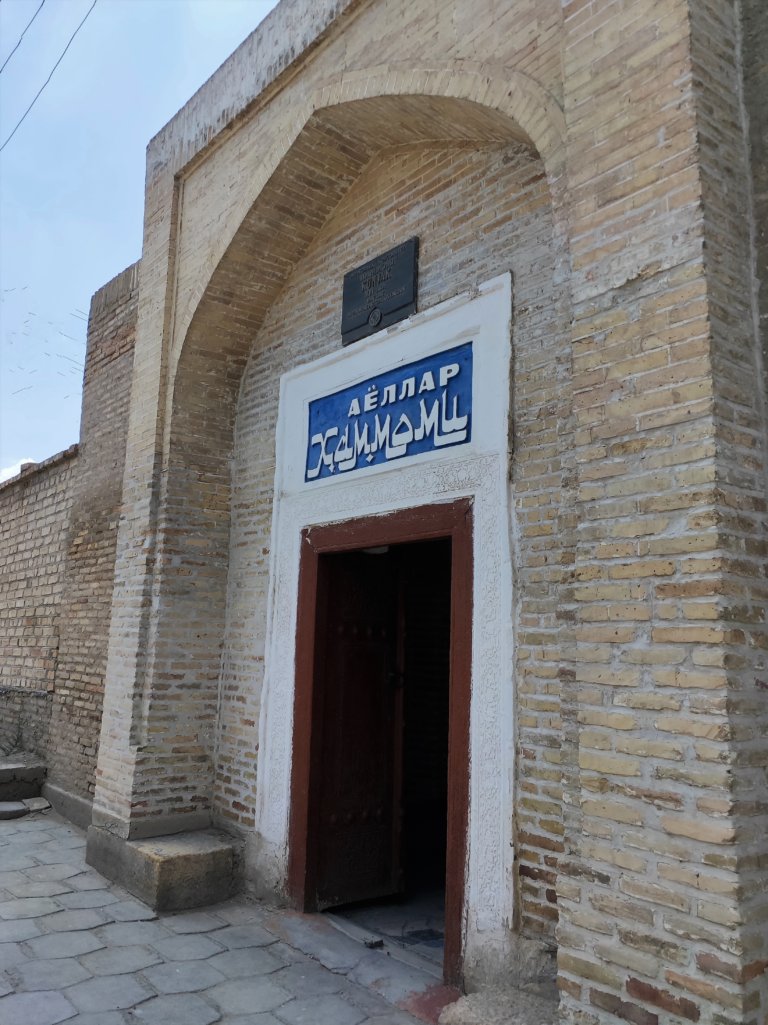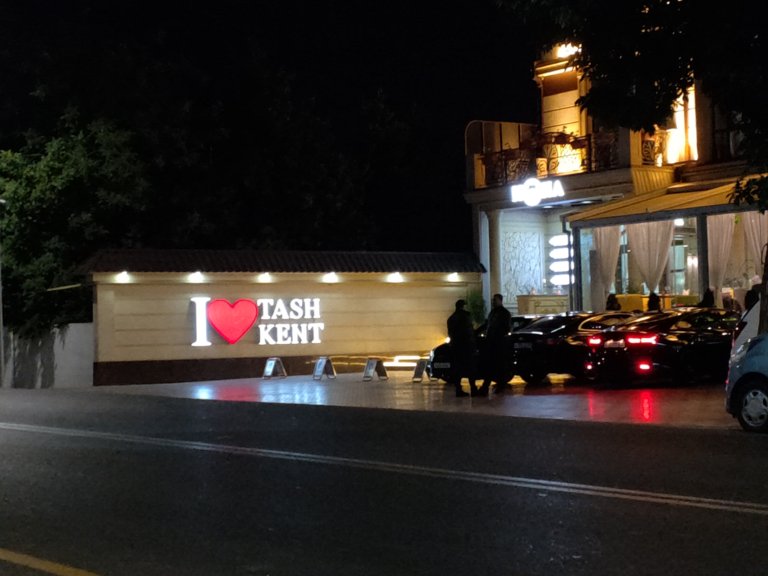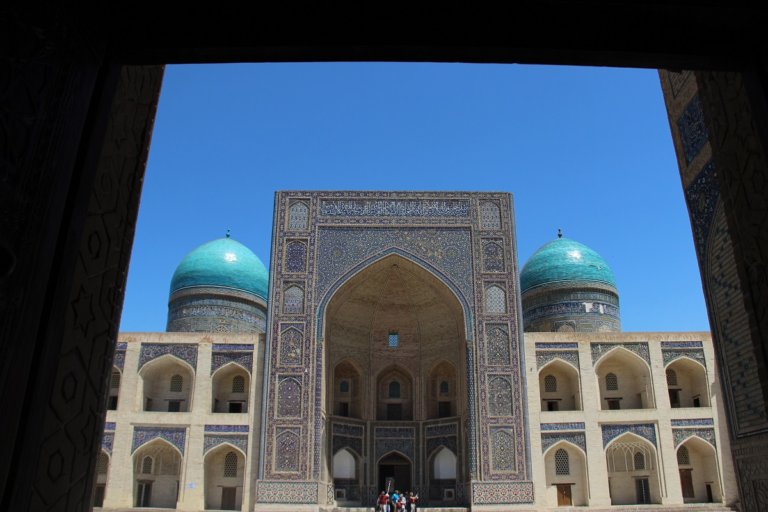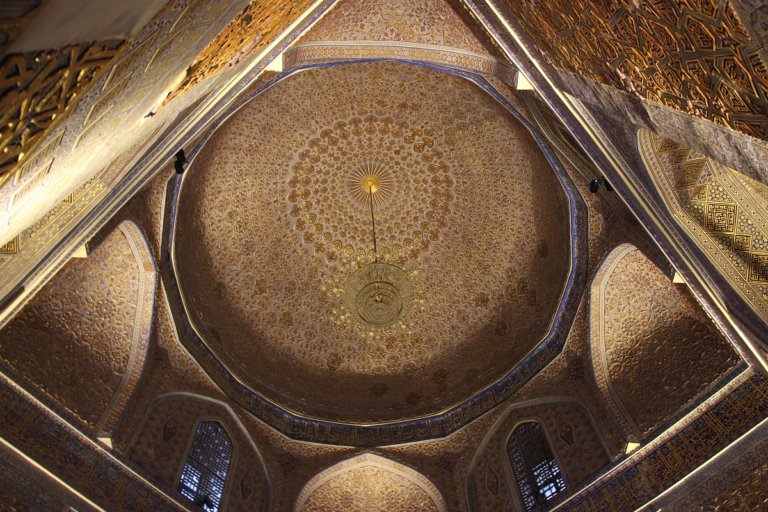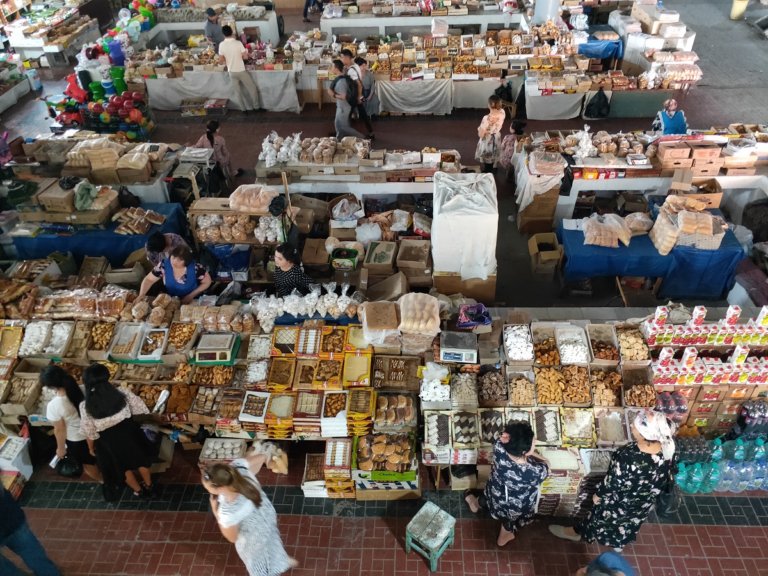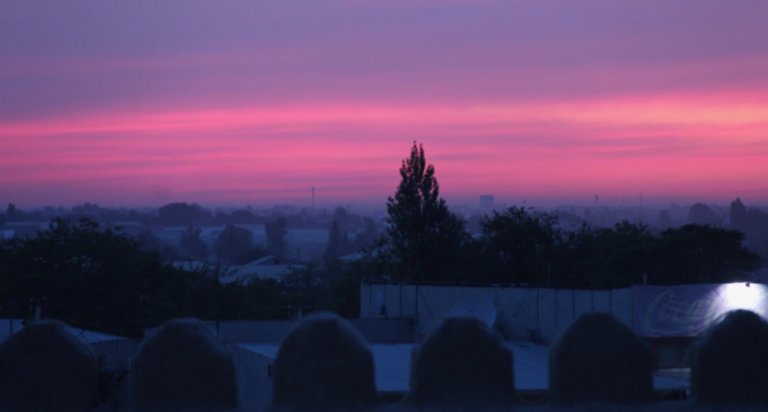Kokand to Tashkent Day 25, May 24th 2019
The Great Silk Road – reminders everywhere of the historical path we follow. Yes we know – it is a modern construct but the history of this place remains. While the truth was more violent and much less romantic – it is the fairytale I grew up with.
Leaving Fergana the history of the ‘Great Silk Road’ and the lushness of the valley are readily apparent. Fruit trees, grape vines, cotton fields, vegetable gardens and rows of straight silver barked birch trees.
Travelling on towards Tashkent we stopped for a history lesson and sightseeing in the ancient city (amazingly most are here – such history) of Kokand (Qo‘qon).
Kokand was an important city on the Silk Road and during the 18th and 19th centuries was the capital of the Khanate. Still trying to understand the eras of the Khanates and others as history, countries, and borders merge and change across time.
The city was also home to a range of craft masters including intricate wood carving, ceramics, embroidery – many of which are still contine today. Often Masters teach their children and so it is passed down through generations.
During the day we visited key sights –
Royal Cemetery of the Khanates. Recently renovated – possibly because the First Lady’s parents are buried here. Within the cemetery are two large 19 century tombs one for royal males – the Dahma I Shakon tomb erected in1820, and one for females built 5 years later. Both currently being renovated and surrounded by many tombs modern and ancient crowded in on each other.
The architecture differs between regions and in Kokand the mosques are of a distinct design that includes an intricate and colourfully decorated ceiling, white walls and mostly a single central minaret.
Jami Mosque (now a Museum) was a wonderful example of the early architecture and my favourite of the day. Making use of the woodcraft masters of the region the external had 98 carved wooden pillars. Astoundingly even the addition during Soviet times was in keeping – no Brutalist design in sight.
The small museum featured crafts, traditional clothing, historical pieces and photographs expanding the history of the area including photographs of the last Khan’s genealogical history to the present day. Exquisite books demonstrated the early paper making skill of the Kokand crafts people
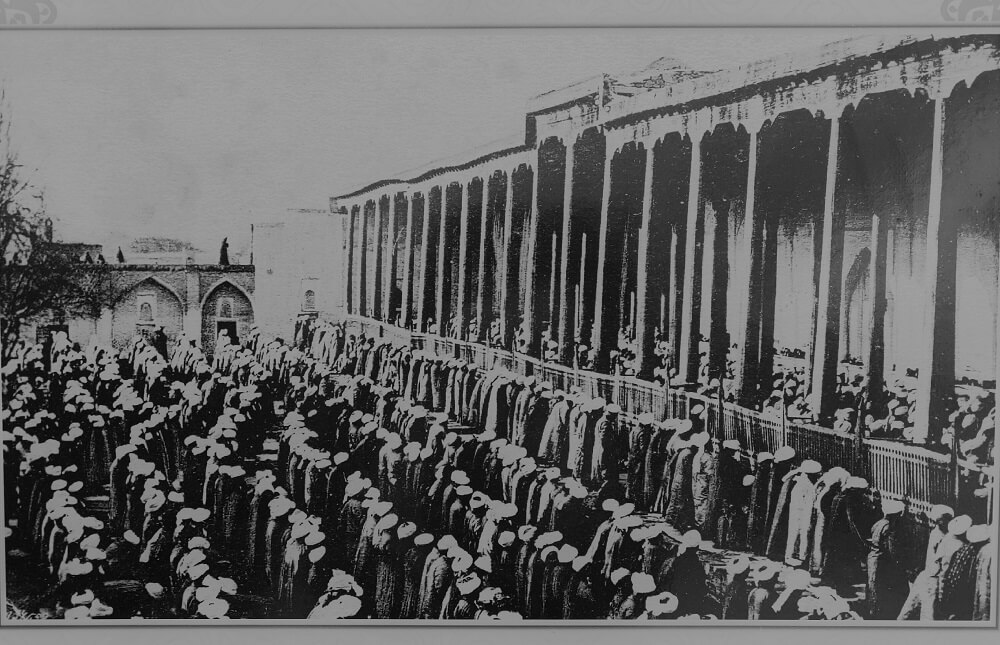
Throughout Uzbekistan traditions have melded with Islam to create a unique blend. For instance skull caps show regional differences and are often decorated with traditional symbols.
Alongside the museum were rooms where crafts people worked. We visited the maker of Halva – not your regular Halva this was more a white chocolate delicious taste sensation – pistachio flavoured, creamy smooth texture.
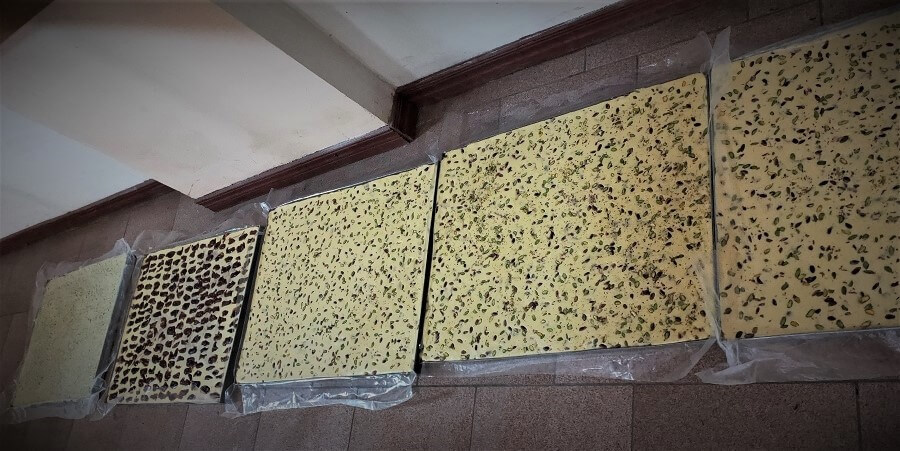
Narbuta-bey (Norbut-Biya )Madrassah – built in the 18th century. Unique in that it apparently continued to function during Soviet times. As we arrived large numbers of people were arriving for Friday prayers. A long building with two domed squat minarets each end and a huge arched entrance. Along the front are 8 smaller arched entrances filled – today with men on colourful mats.
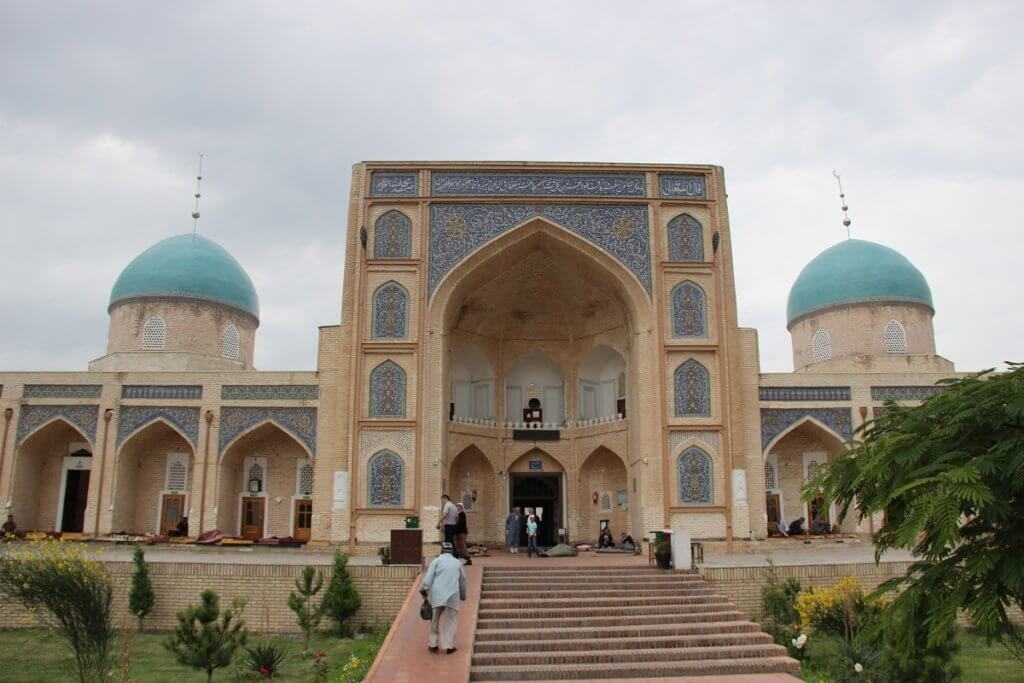
Palace of Khudáyár Khán palace of the last Kokand Khanate ruler. Built by two designers one from Kokand and one from another region. This has lead to two different designs on either side of the entrance. One rounded and earthern colours, one angles and blue/green colours.
Finally on to Tashkent – careering along highways in high speed vehicles rather than the early romantic slow travel on horses or camels staying in Caravanseri’s along the way. Trading beautiful crafts. Surrounding yourself with silk. No – the reality seems a lot less romantic.
PHOTOS OF OUR DAY






